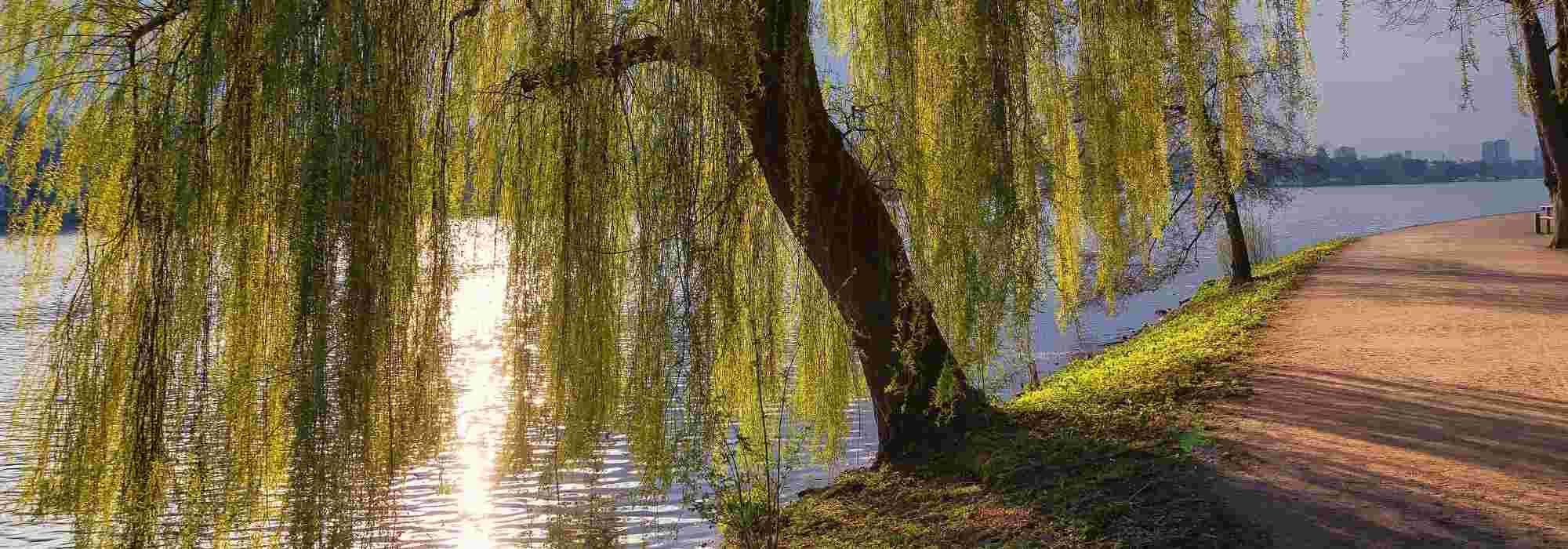
10 shade trees
Best varieties of shade trees, for large gardens and parks
Contents
If everyone loves sunshine, few people don’t seek shelter in a tree’s shade at the height of summer, to picnic, read, nap, or simply cool off. Gardeners also like to bring shade into their gardens, to protect a terrace from the sun’s heat, to play with light, or to create favourable exposure conditions for certain plants. However, not all shade trees are equal. Some shade trees have qualities and drawbacks that must be considered before planting, all the more so when they are large trees intended to remain in place. Here is a selection of 10 large shade trees, renowned for their beauty but also for the pleasant shade they provide, best suited to good-sized gardens or parks.
Weeping willow (Salix alba 'Tristis')
One of the best-known and most popular shade trees, Weeping willow provides generous shade you can even enjoy among its branches, as if hidden in its foliage. Reaching 20 m tall and as wide, it adopts a rounded habit, and its main branches, slightly twisted, give rise to a multitude of pale yellow twigs that fall gracefully to the ground, creating a very romantic effect. Fine foliage is light green, turning yellow in autumn before falling. Perfectly hardy and easy to grow, weeping willow favours sunny positions in any rich, deep soil, even heavy and damp. This shade tree is a perfect candidate near water features. With rapid growth, however, avoid planting too close to buildings.
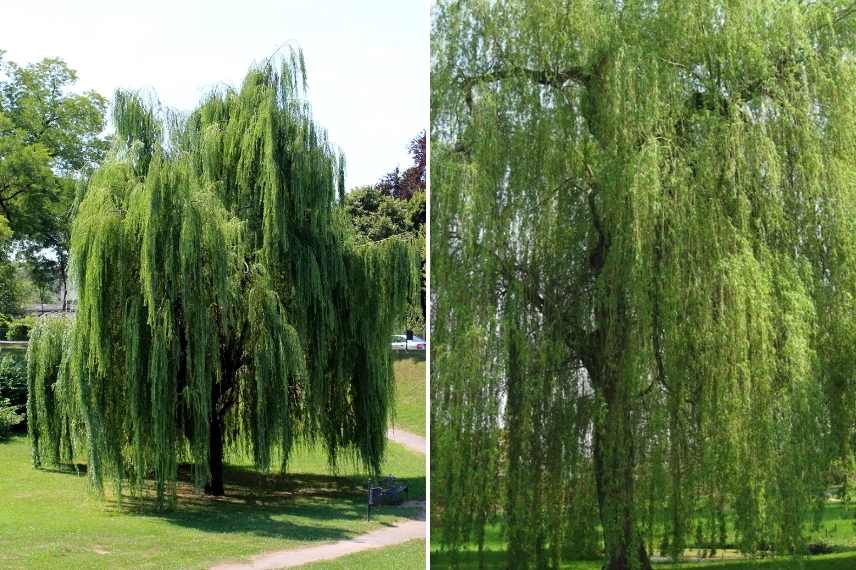
Salix babylonica on left,Salix alba ‘Tristis’
Large-leaved lime 'Rubra' (Tilia platyphyllos 'Rubra')
This Lime has large heart-shaped leaves, slightly dentate, which emerge reddish, then green, before taking on golden hues in autumn. They are borne on twigs that also show coral tones in their youth, particularly decorative when the tree has shed its foliage. This Lime offers generous flowering in early summer, a multitude of pale yellow flowers, fragrant and melliferous. Fruits are globose and attached to a wing. The grey trunk, imposing and reassuring, becomes fissured with age. Very long-lived, it provides dense shade. Its habit, pyramidal at first, ends as a regular dome. Hardy, and of slow growth, this shade tree forms a venerable specimen, about 15 m high by 10 m wide in cultivation. Give it any fresh soil, in a sunny position. It is equally at home as a solitary specimen, as a majestic marker for an avenue entrance, or planted in a row.
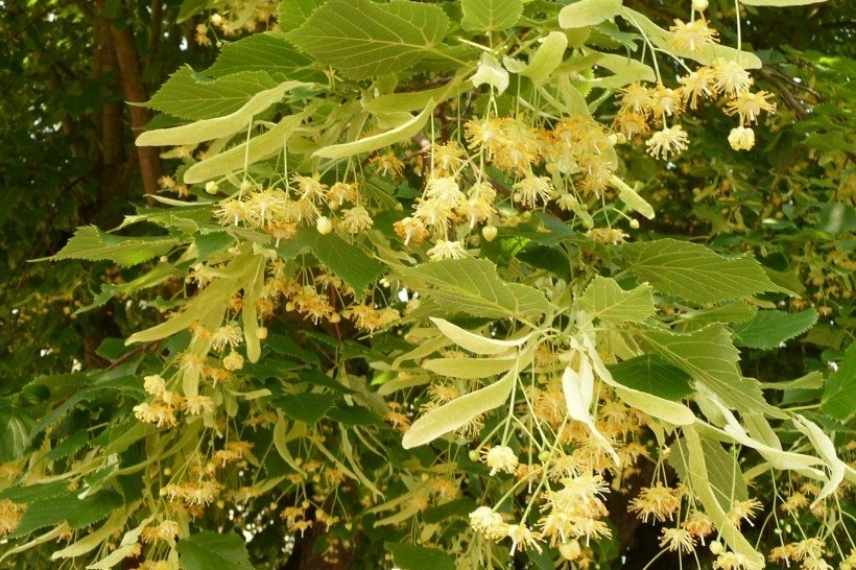
Tilia platyphyllos ‘Rubra’, a majestic shade tree.
→ All about cultivation, pruning and care of the Willow.
Discover other Trees and large shrubs
View all →Available in 0 sizes
Available in 1 sizes
Available in 1 sizes
Available in 1 sizes
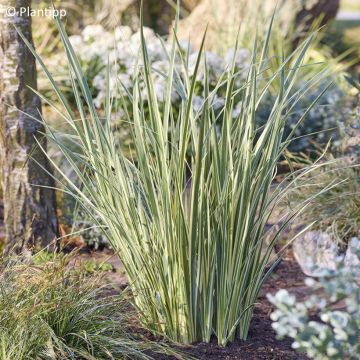
Available in 1 sizes
Available in 1 sizes
Available in 1 sizes
Available in 1 sizes
Available in 2 sizes
Available in 1 sizes
Fruitless white mulberry (Morus alba 'Fruitless')
Mulberries prized for their beneficial shade, but they produce fruit that causes staining and soiling. Morus ‘Fruitless’, sterile, solves this problem. Well established in the Midi, this shade tree can also be used across the territory, thanks to its exceptional hardiness (down to almost -30 °C). Of moderate size (10m x 10m), it forms a stocky trunk from which branches emerge forming a rather spreading crown. Foliage, deciduous, is glossy green, turning golden yellow in autumn. Variety ‘Fruitless’ produces only male flowers, in inconspicuous aments, in spring. Shade tree with rapid growth, it develops a powerful root system, incompatible with proximity to buildings and hard structures. Provide deep but well-drained, fairly fertile soil. It prefers full sun and is highly tolerant in fact of drought as well as pollution. However, it dislikes salt spray.
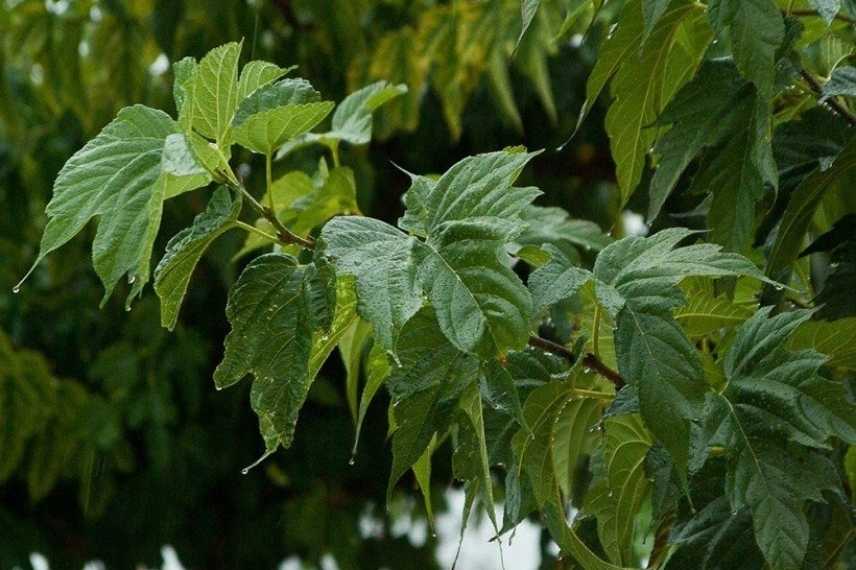
Morus alba ‘Fruitless’
→ Planting, pruning and care of mulberry, we explain everything in our fact sheet.
Read also
Trees and bushes: different habitsPedunculate oak (Quercus robur)
English oak is an excellent shade tree, rich in symbolism. With exceptional longevity, it develops a powerful trunk with dark brown, fissured bark. Its branches, strong and twisted, bear deciduous, lobed leaves, whose green turns brown late in season. Of moderately fast growth, the shade tree eventually forms an airy crown and adopts a silhouette slightly taller than wide. In our gardens, it reaches on average 30 m, and slightly less wide. In spring, female flowers (inconspicuous) and male flowers (in long yellowish aments) develop on older twigs, later producing acorns. Hardy, requiring little maintenance and not prone to disease, it prefers ordinary soils, tending to be clayey and fairly cool at depth. Give it an open, sunny position, and avoid using it if you live by the coast, around the Mediterranean basin or in the Southern Alps, where climatic conditions are not favourable. Elsewhere, it makes a majestic solitary specimen or an excellent avenue tree.
→ Planting, pruning and maintaining oak, all our advice in our factsheet.
Empress tree (Paulownia tomentosa)
Sometimes confused with Catalpa, Paulownia combines shade-providing qualities and ornamental appeal. This elegant shade tree, and with very rapid growth, indeed provides dense shade, ensured by generous, fresh green and bright foliage that falls in autumn. In spring, the naked branches are adorned with numerous flowers, mauve bell-shaped, borne on upright, scented clusters. The corollas then fall to the ground to form an ephemeral but delightful bluish tapetum. When autumn arrives, decorative fruits appear in ovate brown capsules. Cold-hardy, this shade tree reaches about 12 m tall with 10 m spread. To make best use of its shade, clear the trunk of low branches while tree is still young. It prefers deep, cool but well-drained soils, in sunny exposure or light shade, but sheltered from strongest winds, so as to preserve its large leaves as well as its rather brittle wood.
→ All you need to know about planting, cultivation and care of Paulownia, see our factsheet.
Stone pine (Pinus pinea)
Symbol of holidays and the South, Umbrella pine is a large-growing conifer commonly found in southern Mediterranean regions. Although of limited hardiness (-12°C), it can nevertheless be grown as far north as the Paris region, in a sheltered position. It forms a shade tree with an open trunk, topped by a dense, spreading and rounded crown. Regular winds can tilt or sculpt its trunk. Its bark, reddish-brown, is heavily fissured. With long green evergreen needles, Umbrella pine flowers in spring before producing cones that release the famous pine nuts, much prized in cooking. It prefers free-draining, calcareous and sandy soils, but will tolerate deeper soil provided drainage is good. Give it a very sunny spot and enough space for its crown to develop. This shade tree, however, takes up little ground space, but only a selection of hardy plants will tolerate growing at its feet. Very drought-resistant once established, it can sometimes be targeted by pine processionary caterpillars. It is used as a solitary specimen on a short grass meadow, or to form small groves of several specimens, providing welcome shade.
→ Follow our advice to plant, prune and care for Umbrella pine.
Norway maple (Acer platanoides)
Very common in Europe, the Norway maple is a large shade tree with rapid growth. Rising on a single trunk, it develops a rounded to pyramidal crown, reaching 20 to 30 metres, with a spreading of 15 metres. Its deciduous, glossy leaves are palmate, dark green, turning coppery yellow in autumn. In early spring, the tree produces very small yellow-green flowers, borne in corymbs, which are followed by winged fruits. Brown bark has little texture. Hardy and capable of living for nearly two centuries, Norway maple thrives in cool atmospheres, in fertile but well-drained soil, even calcareous. Deep soil is necessary for good development of its powerful root system. It prefers sunny but not scorching positions, and also tolerates partial shade. Easy to grow, this shade tree can form a specimen with a very impressive presence when placed in the middle of a short grass meadow, in a park or a large garden. It also fits well in a grove, or in a majestic row to line an avenue.
→ Everything you need to know about planting, pruning and care of maples is available on our site.
Canary Island Date Palm (Phoenix canariensis)
Canary Island date palm captures the imagination with its decidedly tropical look. For others, it evokes the Mediterranean coast. In any case, this is not a shade tree that leaves one indifferent, and for good reason. A thick trunk, called stipe, dark grey in colour, on which the attachments of old leaves leave scales, and long palmate fronds (sometimes up to 5 m), green, deeply divided and inserted regularly at the top of the stipe. Their flexible, graceful habit forms a spreading crown, resembling a fountain. Flowering occurs in summer, with short broom‑like clusters for the male flowers, and long pendulous inflorescences, yellow in colour, for the female flowers. This is followed by production of yellow‑orange fruits, not edible but decorative. Canary Island date palm displays rapid growth in rich, moist soil, but tolerates poorer, even sandy soil. Good drainage is, however, necessary. Thus this shade tree can reach 15 m in height, but its stipe, not bulky, occupies only about 60 cm at ground level. Resistant to drought, wind and sea spray, it can endure short periods of frost of around -7°C to -10°C. This superb palm requires full sun, sheltered from cold winds, and tolerates summer drought. Its two main enemies are a formidable palm moth larva and the red palm weevil.
→ All about planting, growing and caring for palms.
Common horse chestnut (Aesculus hippocastanum)
A classic in our landscape, the Horse chestnut is another excellent choice for creating dense shade. This tree reaches 25 m in height with a 15 to 20 m spread. It has a straight, grey, fissured trunk. Leaves are large and compound, with several leaflets with dentate margins. Green, they turn rusty before falling, and can scorch in strong sun. The crown of the horse chestnut is broad, more or less pyramidal, and the foliage is dense. Flowering occurs around mid-spring, after leaf emergence. The small flowers, white or pinkish, are grouped in large erect clusters. Then come the fruits, conkers (inedible), enclosed in husks bristly with spines. This shade tree develops faster in deep, even calcareous, fresh but well-drained soil. Choose a site in full sun or partial shade, sufficiently open so the horse chestnut can grow freely.
→ Discover how to plant, prune and care for Horse chestnut in our article.
Blue Atlas cedar (Cedrus libani 'Atlantica Glauca')
Close relative of Cedrus libani, Blue Atlas Cedar is a large conifer (20 m x 10 m), with impressive presence. Branches arise from a massive, straight trunk, giving an overall broad, very elegant flat-topped silhouette. The branches are made up of short needles that emerge bright blue before developing beautiful grey to silvery hues. Cones appear in early autumn. Male cones are brown; female cones start green before turning brown with a violet tinge. This silvered cedar requires space to thrive. Hardy down to -15°C, it is a majestic shade tree with a romantic aspect. It tolerates poor, dry soils but grows faster in deep, rich soil that remains cool. Allow ample space, in full sun, in the centre of a park or at the edge of a property.
→ All our advice to plant, prune and care for cedar in our dedicated guide.
- Subscribe!
- Contents
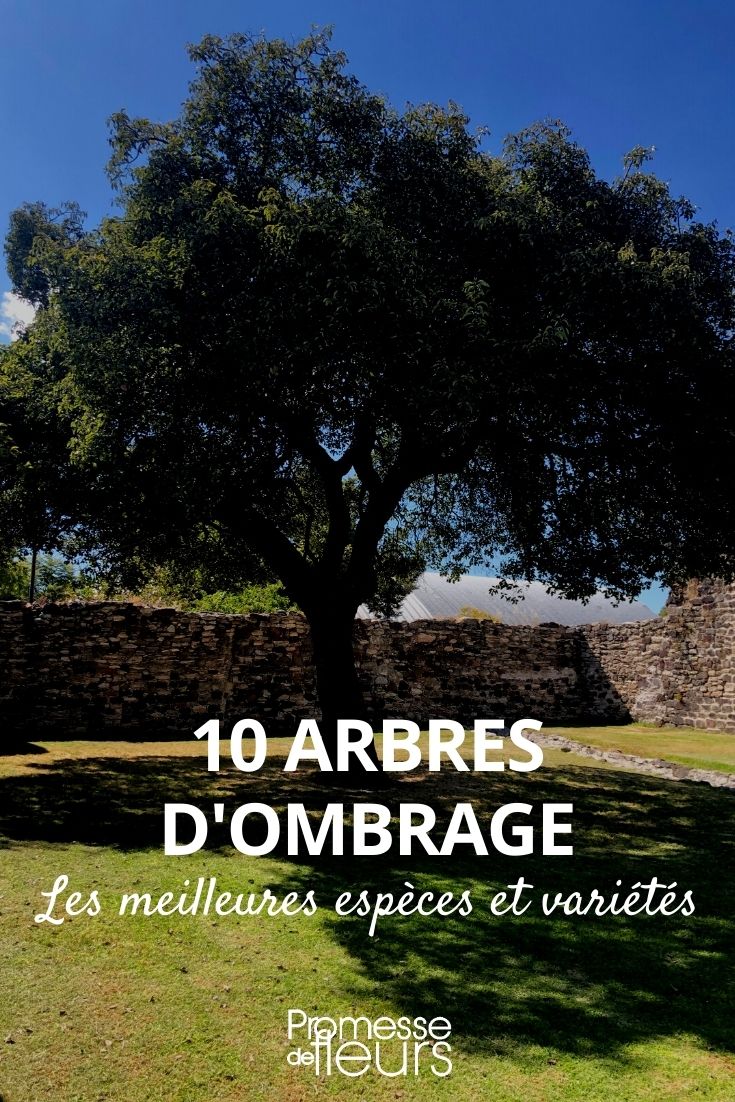



































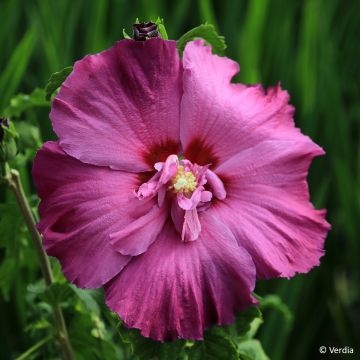
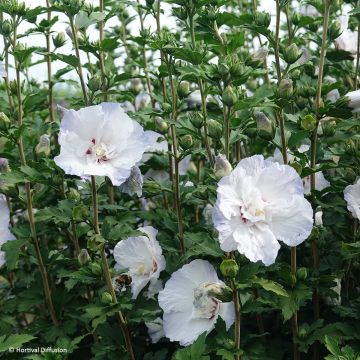


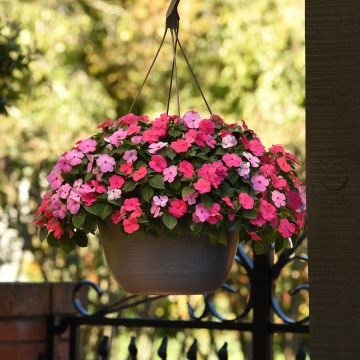
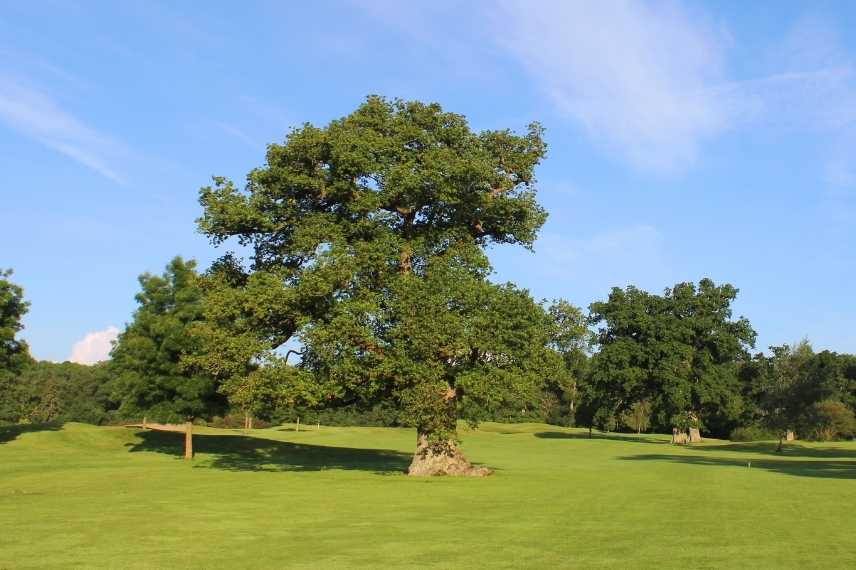
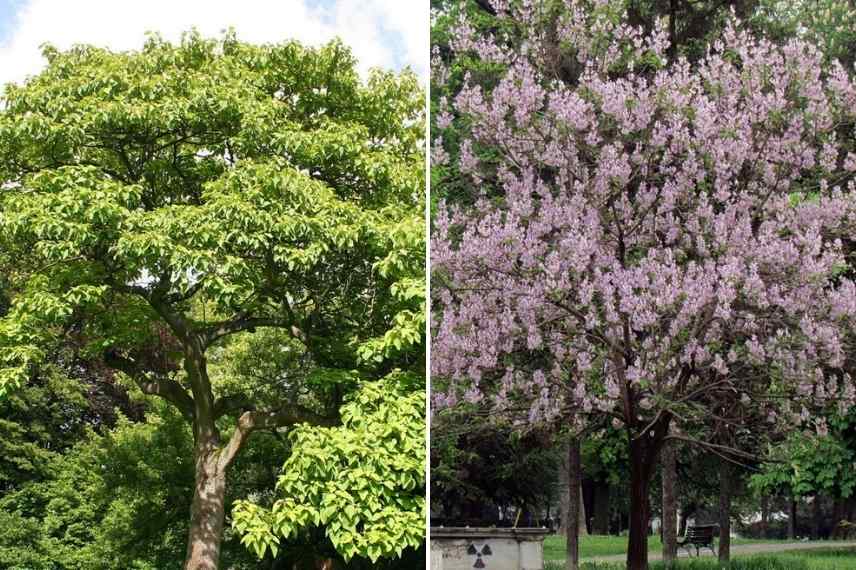
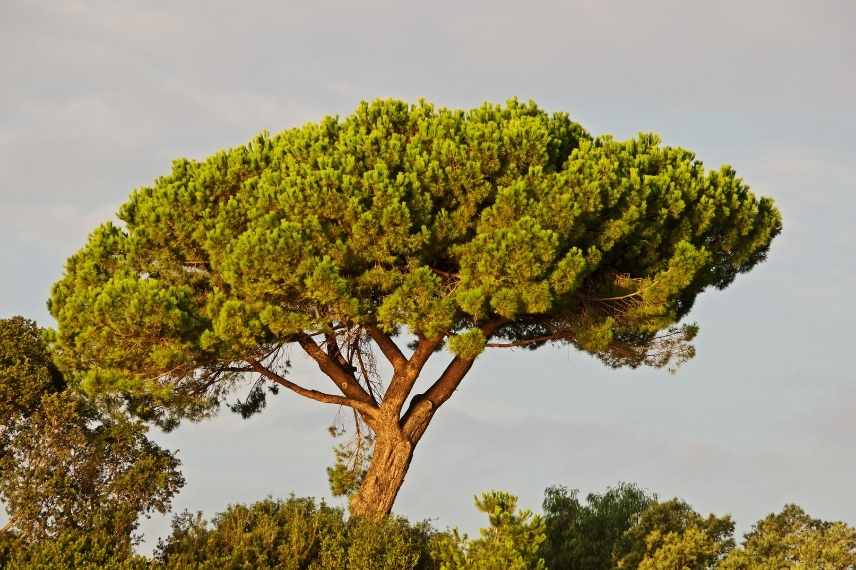
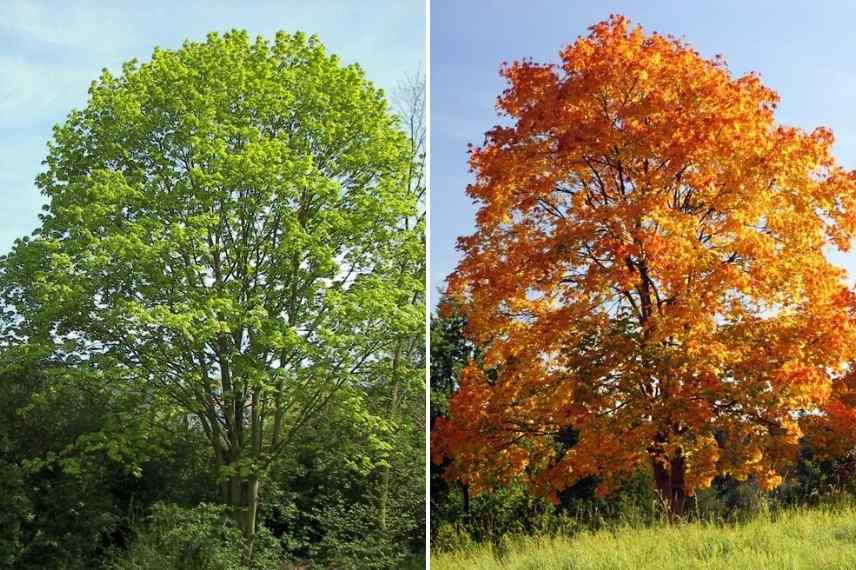
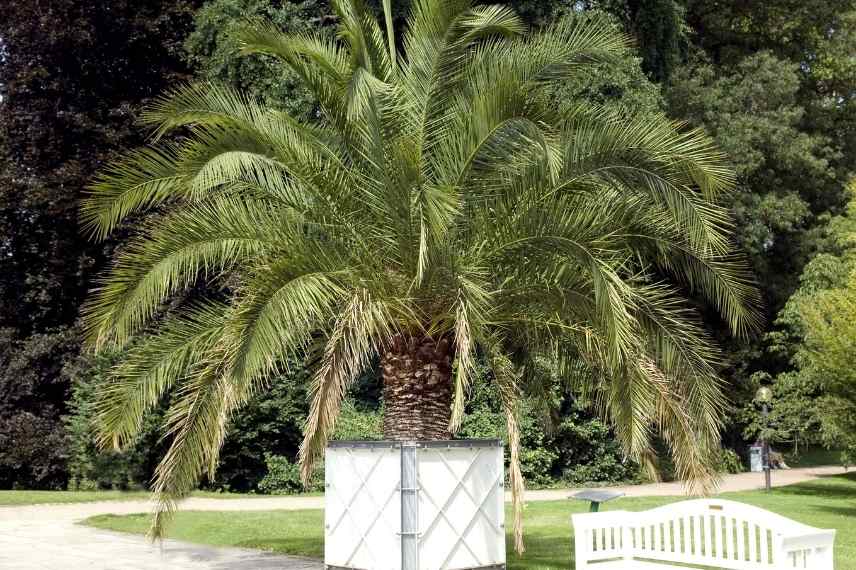
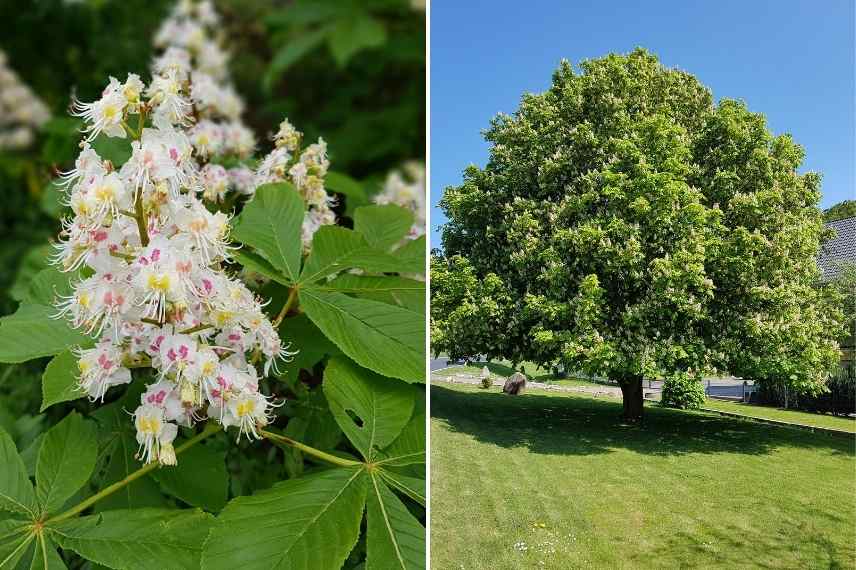
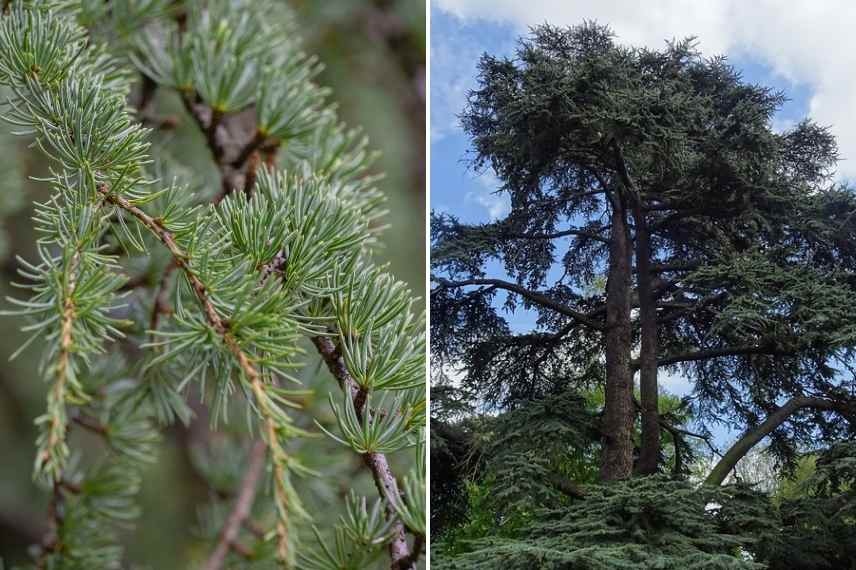
Comments